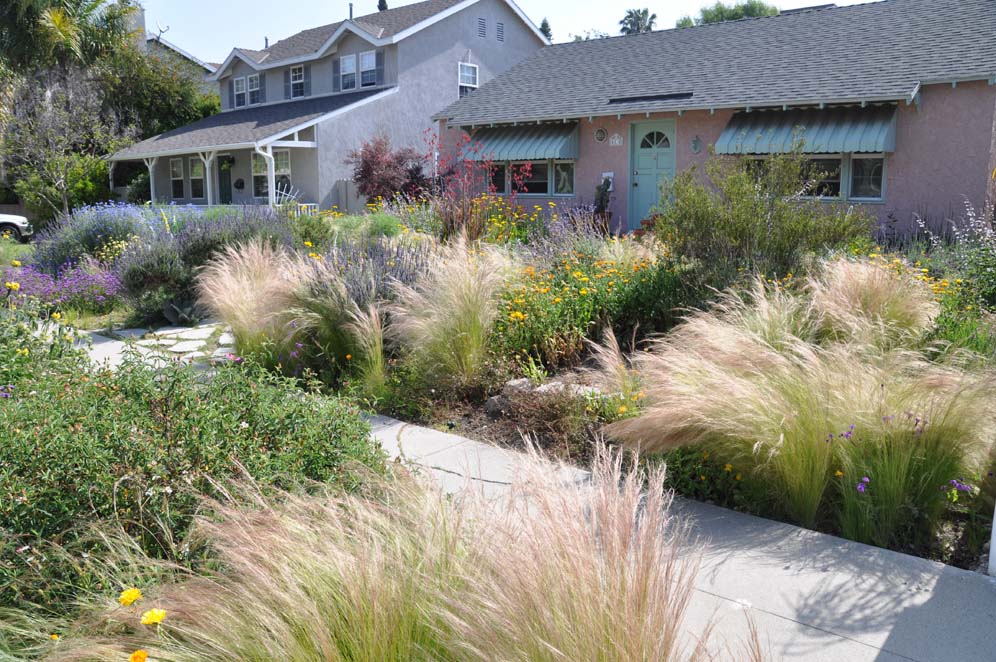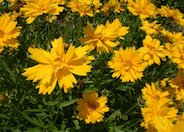
Common name:Double Sunburst Coreopsis
Botanical name:Coreopsis grandiflora 'Double Sunburst'
The 'Double Sunburst' is a wonderful cultivar and a showy, Southern U.S. native. Golden yellow, double flowers on 2' bushy plants bloom from June to September in full sun and average to dry soils. It makes for good cut flowers, and pruning keeps the plants abundant with blooms. -Holland WIldflower Farm
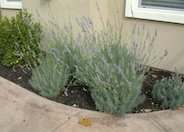
Common name:Hedge Lavender, Lavandin
Botanical name:Lavandula X intermedia
With tall, 24-30" stems, 'Provence' has true, lavender colored flowers that are fragrant and excellent for cutting. It flowers in early June and has large, gray/green leaves.
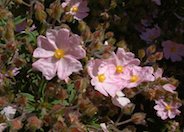
Common name:Pink Coral Rockrose
Botanical name:Cistus X skanbergii
This Rockrose is a bushy evergreen shrub 4' high and 6' across with narrow, gray green leaves and complimentary clear pink flowers. Flowers appear in great profusion in mid-spring and can continue well into summer. It is more refined in character than most other rockroses, and well-suited to smaller gardens. -Native Sons Nursery
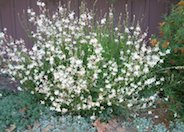
Common name:White Gaura
Botanical name:Gaura lindheimeri
White Gaura is a profusely flowering perennial for all zones; it grows 2'-4' high. It has pink buds that open to showy white flowers in spring and fall. It needs full sun and is drought tolerant.
-Cornflower Farms
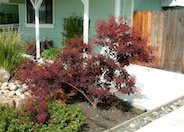
Common name:Purple Smoke Tree
Botanical name:Cotinus coggygria 'Purpureus'
A deciduous shrub or small tree that grows up to 10' tall, the 'Purpureus' is grown for its wispy, thread-like flower clusters and outstanding fall color. Its foliage has a reddish purple color that turns somewhat green in summer. The plant requires sun to part shade, with little or no summer water. -Monterey Bay Nursery
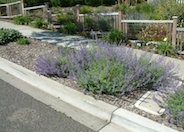
Common name:Catmint
Botanical name:Nepeta X faassenii
Nepeta faassenii makes soft, gray green, undulating mounds that are 1.5' high when blooming. The small leaves are attractive to cats. This perennial has lavender blue flowers in late spring and early summer.
| Designer: Alison Flesch | LA Meadow Garden 1 |
Photographer: GardenSoft |
Soils and Compost:
Incorporate compost 6" into your soil to retain water, reduce compaction, feed earthworms, and provide valuable nutrients to your plants.
Integrated Pest Management:
Remove irrigation water and fertilizer from areas where you don't want weeds to grow.
